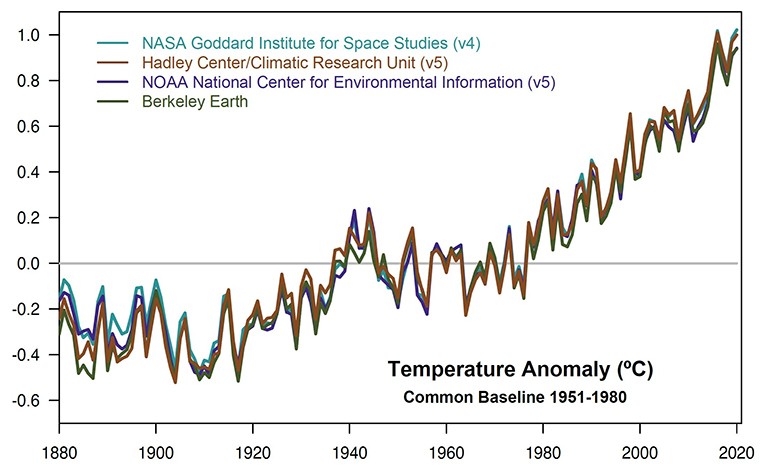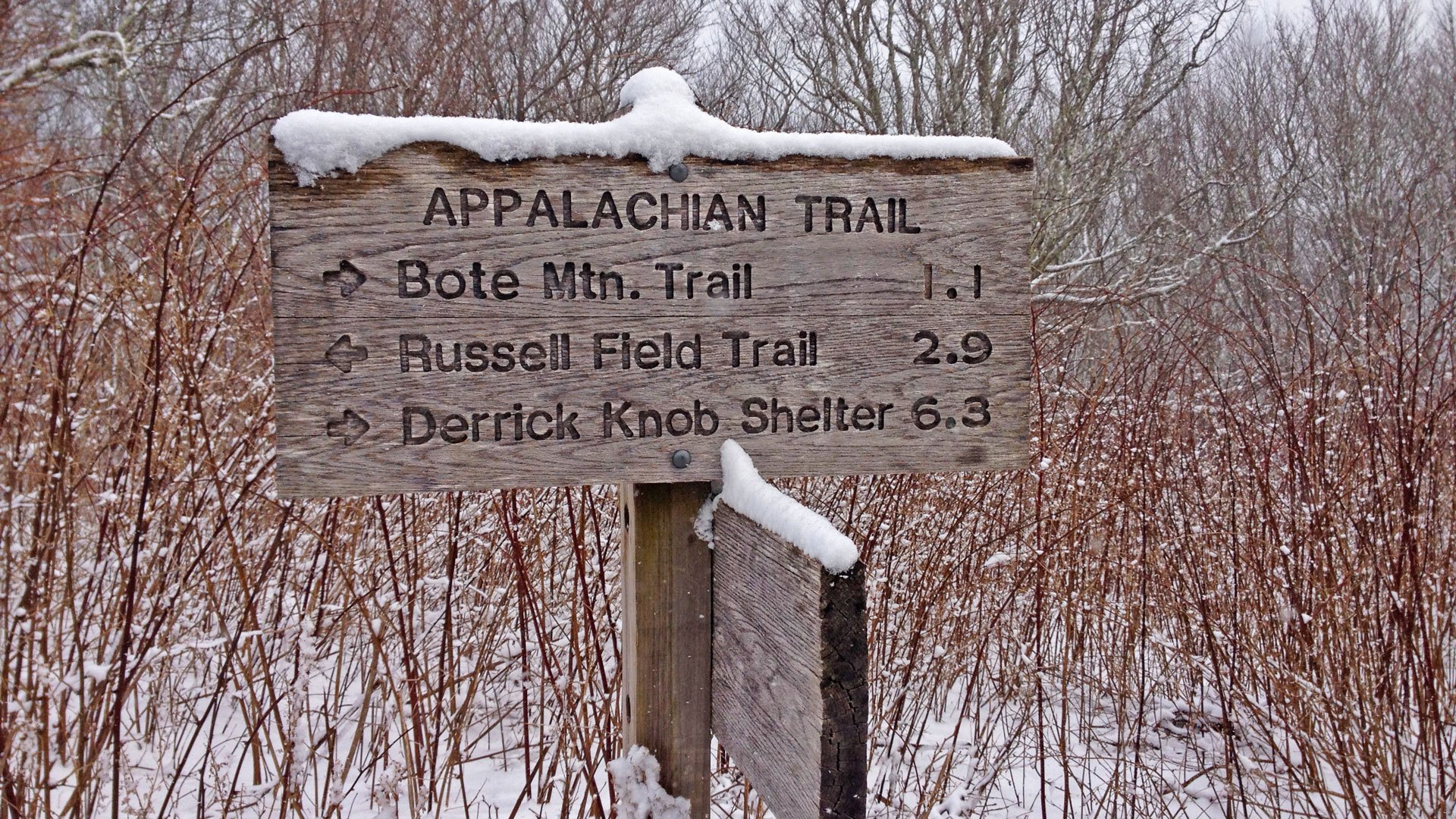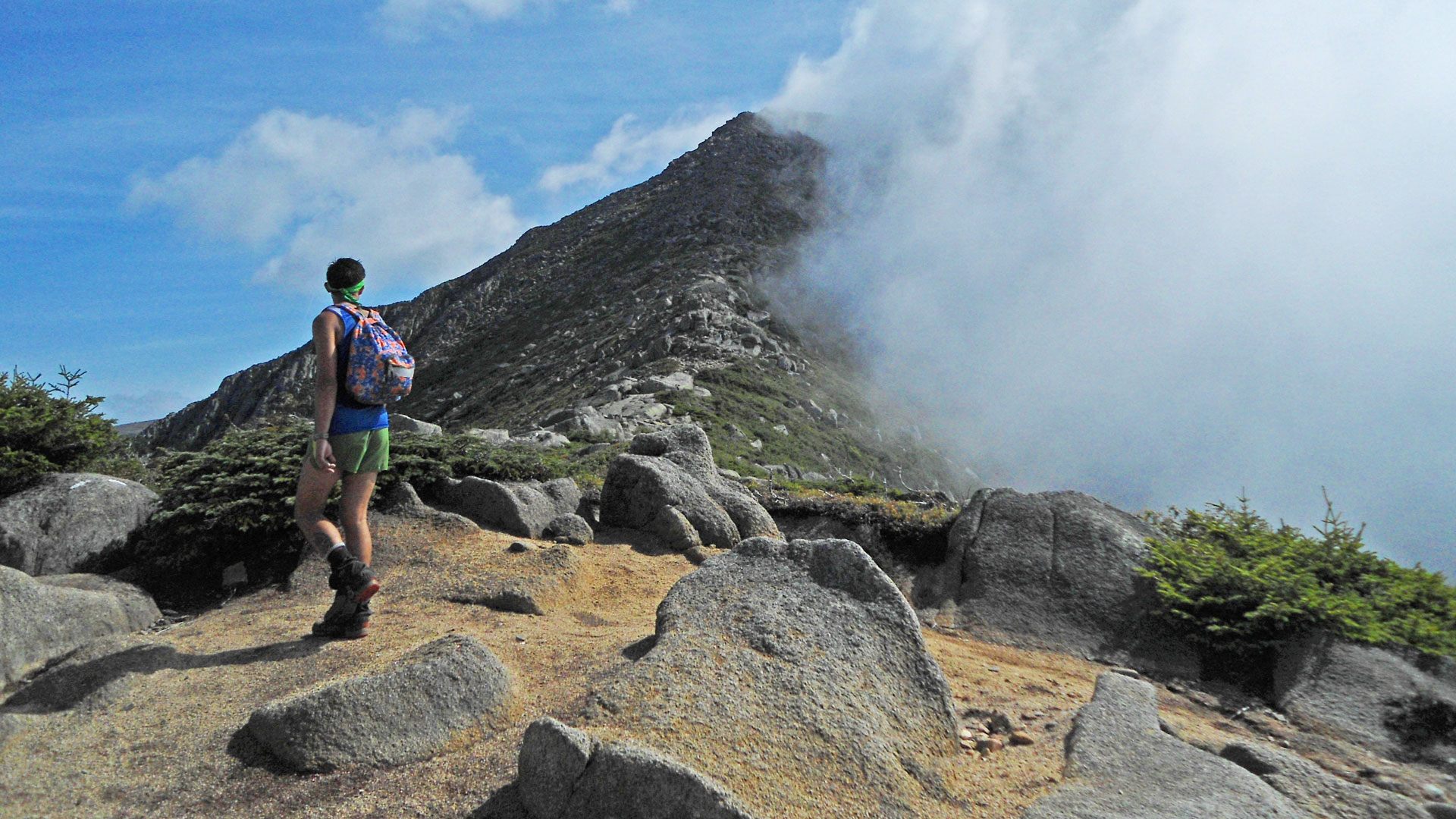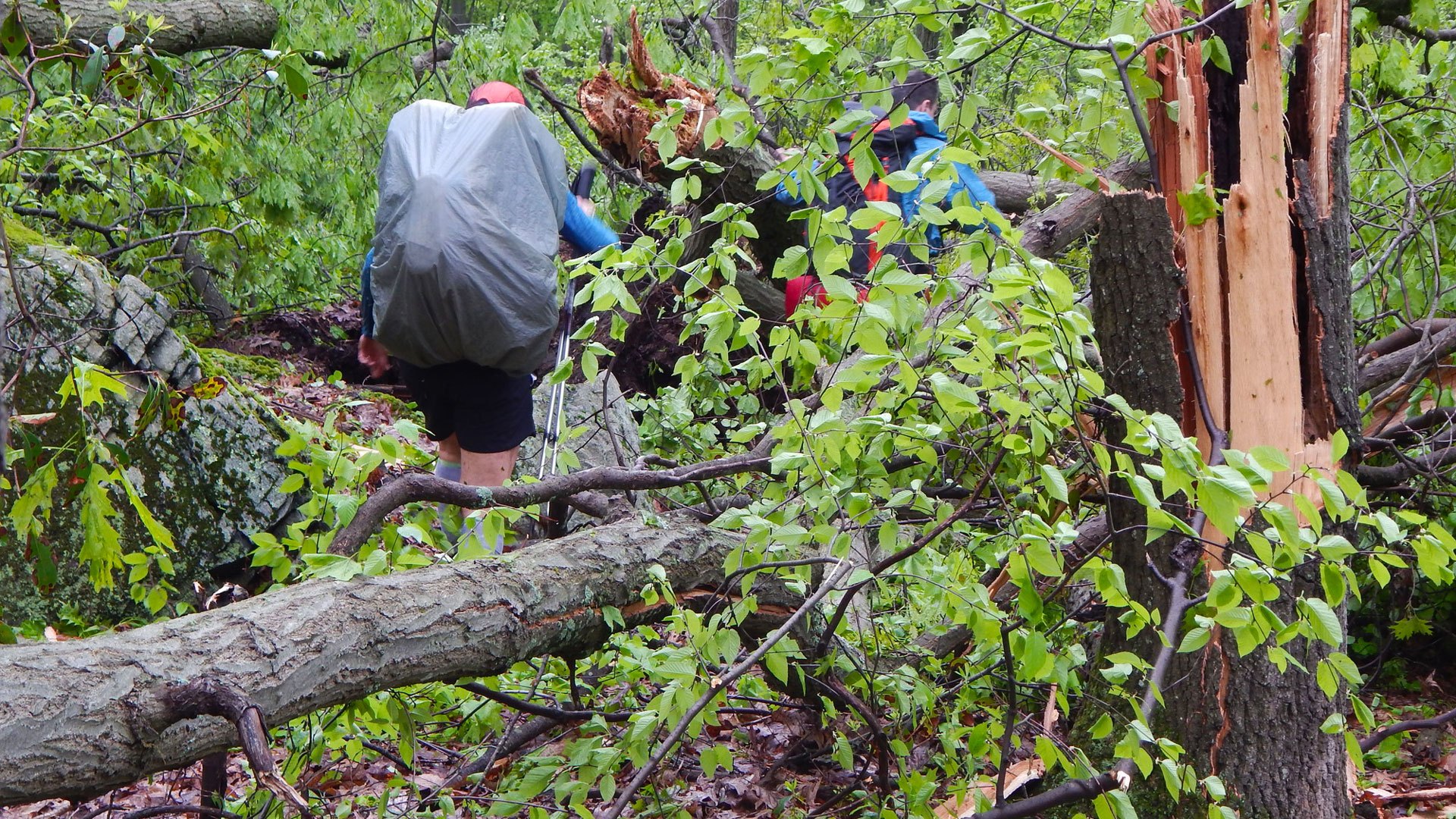By Jordan Bowman and Marian Orlousky
The A.T. and Climate Change: Reviewing the Basics
February 26, 2021
The following post is part of our series on climate change and the Appalachian Trail. For other parts in the series, click the links below.
- Part One – Preserving the “Oxygen” of the Trail
- Part Two – The A.T. and Climate Change: Reviewing the Basics
- Part Three – Climate Resiliency and the A.T.
- Part Four – Climate Action and the A.T. Landscape: A Primer
- Part Five – A Climate-Resilient A.T. Depends on Effective Federal Policy
- Part Six – Building a Climate-Resilient A.T. Landscape
“Please make no mistake, climate change is the biggest threat to security that modern humans have ever faced. I don’t envy you the responsibility that this places on all of you and your governments… There is no going back.”
Sir David Attenborough, February 23, 2021
For those who have paid attention to news headlines, statements like Mr. Attenborough’s are undoubtedly familiar. The call for climate action has grown considerably as increasing evidence ties climate-warming trends to human activities. From scientists, to politicians, to conservation organizations including the Appalachian Trail Conservancy (ATC), the consensus has become clear: immediate and substantial action must be taken to prevent or minimize the most drastic impacts of climate change.
Yet as these conversations continue, it has also become clear that discussions about climate change can be complicated and confusing. As we continue our series on climate change and its effects on the Appalachian Trail (A.T.), we thought it would be important to lay the groundwork for some of the key topics we will cover over the next several weeks.
For some, this information will be familiar. For others, it will be brand new. For all of us, it will be essential for understanding how we move forward to protect not only places like the A.T., but the rest of the world around us.
Let’s start with the basics:
What is climate, and how is it different from weather?
In the simplest terms, weather is the short-term state of the atmosphere. Is it hot or cold outside? Is it raining, snowing, cloudy, or sunny? Weather is limited to a particular period of time — for example, “It is raining today, but it is expected to be clear over the next several days.”
Climate, on the other hand, is the long-term weather conditions of an area. Local climates are caused by many factors, like geographical location (e.g., how close/far an area is from the Earth’s equator), altitude, and nearby geographical features (e.g., mountain ranges, large bodies of water, etc.). For example, the climate in Georgia commonly includes spells of hot, humid weather in the summer; whereas the climate in Maine is typified by long winters with heavy snowfall. When we study climate, we are examining the long-term (typically 30 years or more) weather averages and trends, tracking variables like temperature, precipitation and humidity.
In other words: by studying the weather patterns over a long period of time, we are able to determine the climate of an area and, importantly, see how it changes.
There are many climate types around the world, but they are collectively known as the global climate, or Earth’s climate. When scientists talk generally about climate change, they are usually referring to the changes to the Earth’s climate as a whole.
Learn more about climate change in our A.T. Ed-Venture video, “Climate Change in New Hampshire’s White Mountains.”
What is climate change, and how are human actions affecting it?
As it is used today, the term climate change is not referring to the natural changes every climate may experience over time. Instead, the term climate change refers to a notable deviation from long-term global and regional climate averages. In other words, based on historical data and projections, the climate is changing much differently than it would have under natural conditions.
Recent deviations from the norm have been observed in many different climates across the globe, as well as the Earth’s climate as a whole. It is both the change, and the accelerated rate of that change, that is a cause for concern.
Overwhelmingly, climate scientists have determined that human activity is the culprit for climate change. Carbon dioxide and methane, which are released into the atmosphere when fossil fuels like oil and gas are burned, are referred to as greenhouse gases. This is because their presence in the atmosphere acts like the windows of a greenhouse for the Earth, absorbing solar energy and trapping it within the Earth’s atmosphere. Without greenhouse gases, the planet couldn’t maintain the warmth needed for life to exist. Yet when too much of these gases enter the atmosphere, the opposite problem arises: the increased amount of thermal energy trapped in the atmosphere leads to an increase in the Earth’s average temperature. The faster those gases accumulate, the faster the Earth’s temperature rises.

Temperature data showing rapid warming in the past few decades, the latest data going up to 2020. According to NASA data, 2016 and 2020 are tied for the warmest year since 1880, continuing a long-term trend of rising global temperatures. The 10 warmest years in the 141-year record have occurred since 2005, with the seven most recent years being the warmest. Credit: NASA’s Goddard Institute for Space Studies, located at climate.nasa.gov.
The Earth’s overall temperature has gone up about 1.15 degrees Celsius (2.07 degrees Fahrenheit) since the late 1800s, and a steady increase is expected to continue.
How will climate change affect the Appalachian Trail?
As the effects of climate change become more pronounced, we expect to see the following changes moving forward:
A Decrease in Summertime Precipitation
Precipitation is projected to decrease significantly in the southern two-thirds of the A.T. Drought will be more likely along these sections of the Trail in the summer months, with many water sources drying up until rainfall returns. Trees and native plants are likely to be more stressed and susceptible to pests and disease, which will lead to a higher presence of hazard trees within the A.T. corridor.
A Rise in Temperatures
The average temperature on the A.T. is predicted to increase around 5.4°F by the year 2100. As average temperatures increase on the northern sections of the Trail, we are seeing the spread of harmful species like hemlock wooly adelgid into previously uninfected hemlock stands. Hikers can also expect to encounter larger populations of ticks. Shorter, warmer winters have led to a greater prevalence of winter ticks, which have had devastating impacts on New England moose populations. More areas will receive their precipitation as rain rather than snow, so the snowpack won’t be supported by new snowfall. The lack of snowpack will lead to drier conditions later in the year and can negatively impact wildlife, who depend on the snowpack to regulate water levels and temperatures.
An Increased Risk of Wildfires
Increasing temperatures and decreased summertime precipitation are expected to contribute to more frequent and more severe fires throughout the A.T. corridor. Even areas that typically receive ample rainfall, such as New England, may be more susceptible to droughts and, thus, an increased risk of wildfires.
An Increase in Storm Severity
Incidents of severely damaging storms will become more frequent, resulting in greater impacts to Trail resources (such as a washed-out/damaged footpath, destruction of Trail infrastructure, etc.), more frequent and intensive management needs, and more hazard trees. More severe rain events are predicted, leading to increased flooding, erosion, and sedimentation throughout the A.T. landscape.
What can be done?
The effects of climate change are already being felt throughout the world, including on the A.T. Some impacts are unavoidable at this point, and it will take a coordinated, comprehensive effort throughout the world to prevent the worst predicted impacts. One important step in this process is ensuring connected forest landscapes — such as the A.T. — are protected as “carbon sinks,” removing carbon dioxide from the atmosphere and, as Benton MacKaye once said, providing the oxygen “that could save thousands of lives.”
Over the next several weeks, we will further discuss the work needed to fortify the A.T. against climate change: ensuring the Trail landscape is resilient against rising temperatures; mitigating the unavoidable effects of climate change; protecting the biodiversity of the Trail; and ensuring the A.T. and its surrounding lands can assist in the sequestration of greenhouse gases.
Combating climate change is one of the most challenging — yet important — endeavors in environmental history. Protecting important environments such as the Appalachian Trail and its surrounding landscape is a vital part of that battle.
Post updated on March 2, 2021, to further clarify some sections.
Your donation supports our work to fortify the Appalachian Trail against the effects of climate change, helping ensure it will continue to benefit us all for generations to come.




